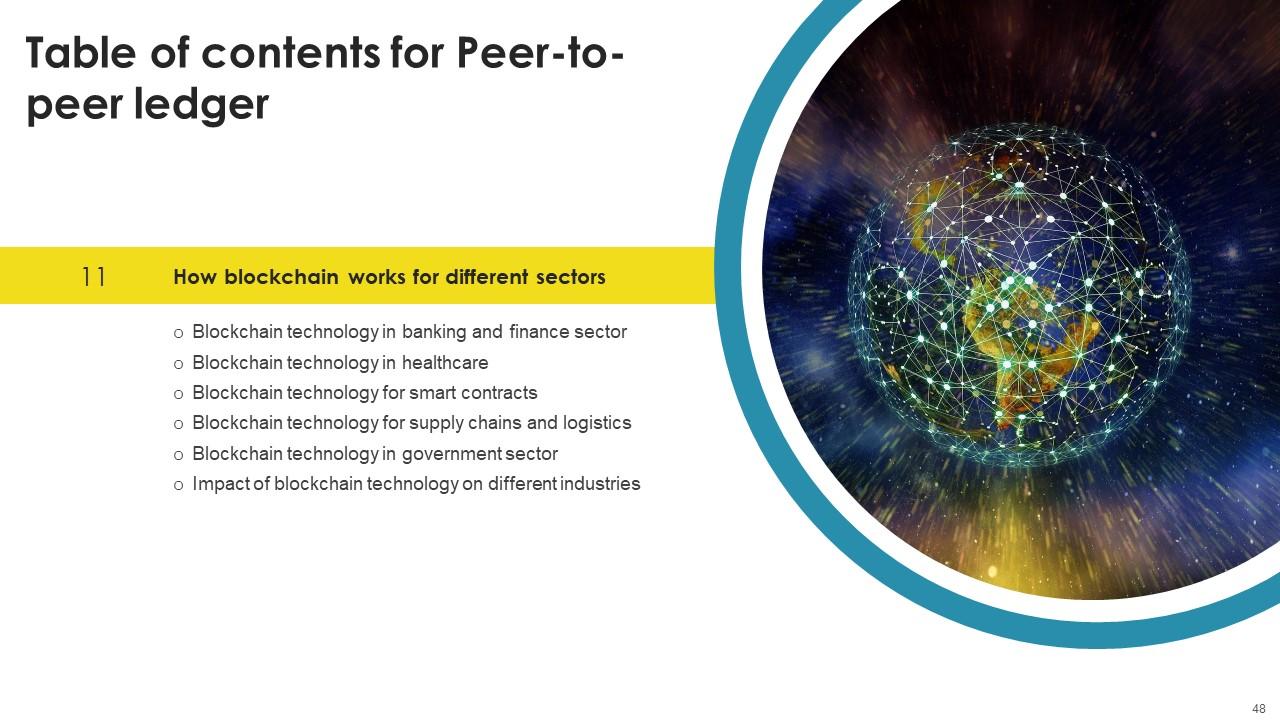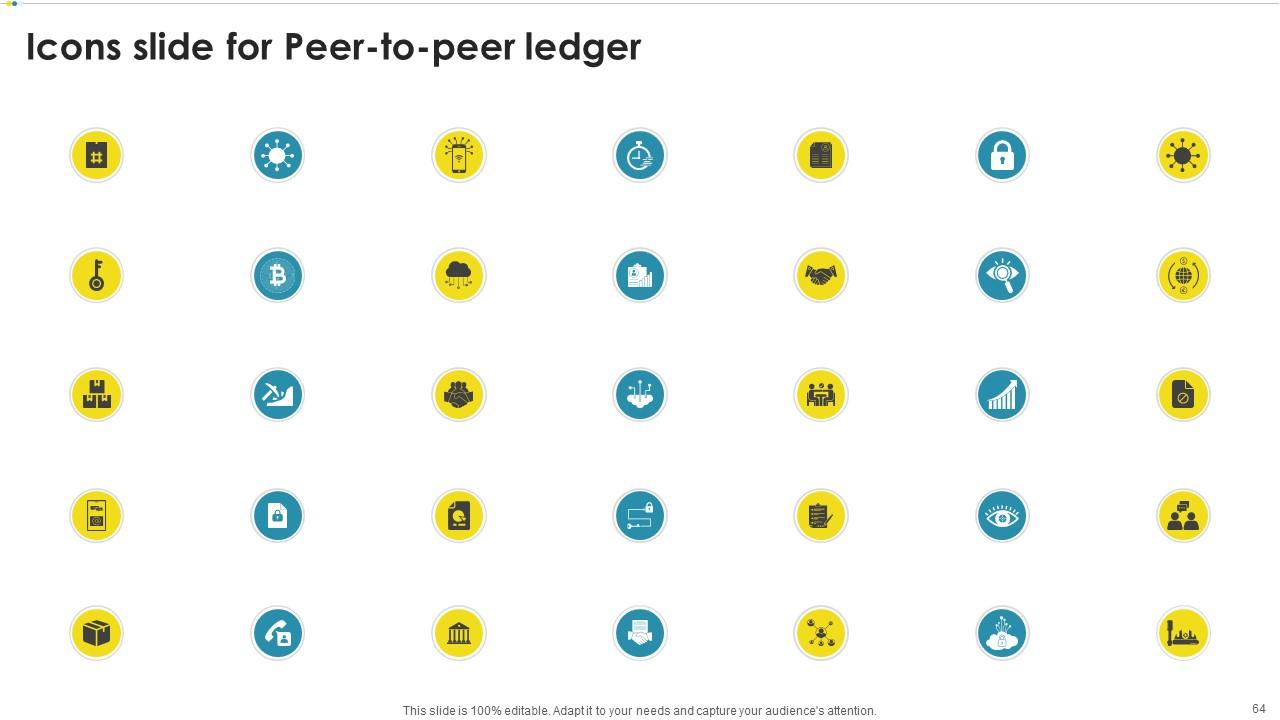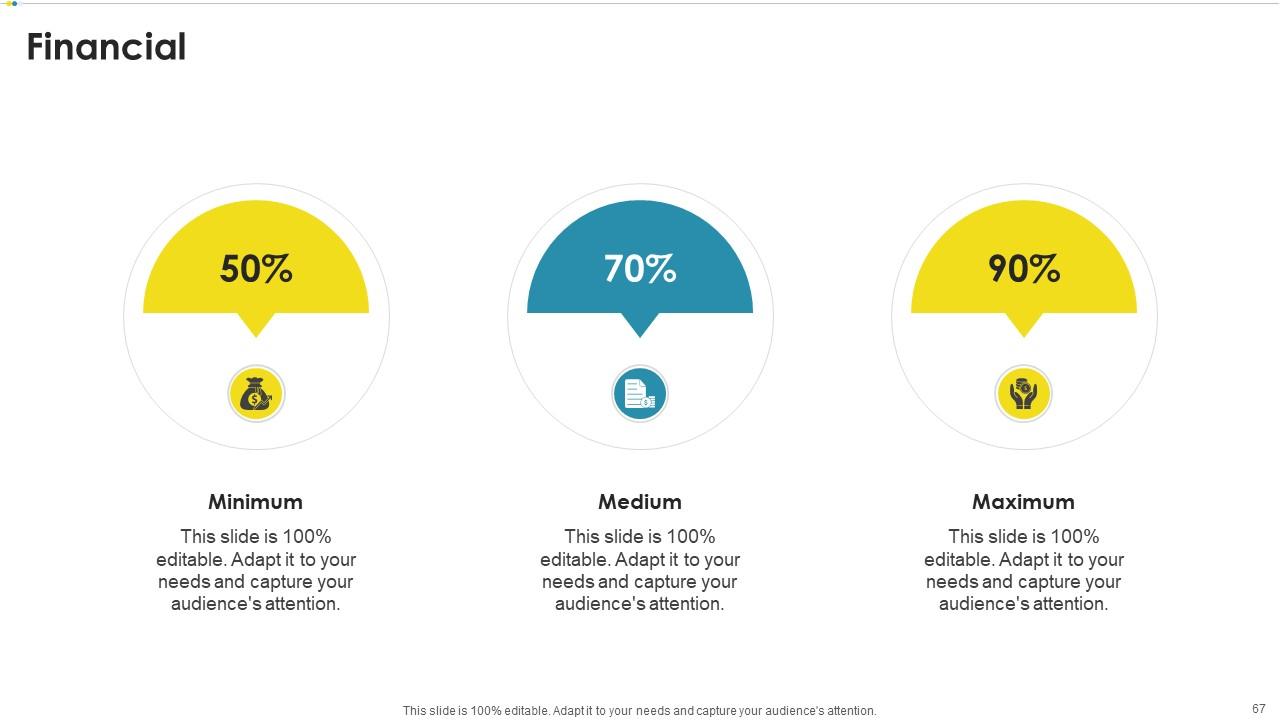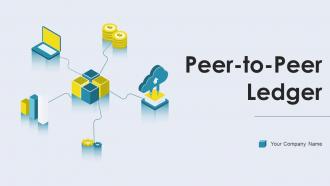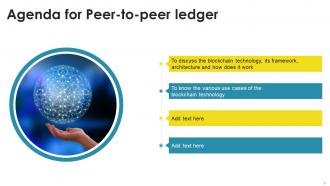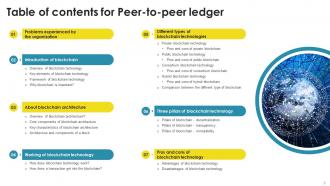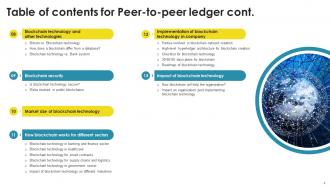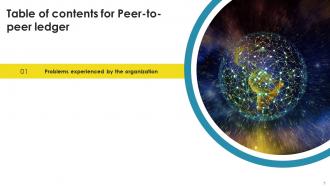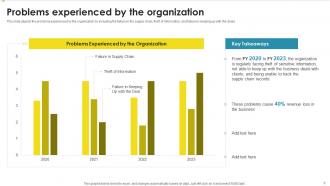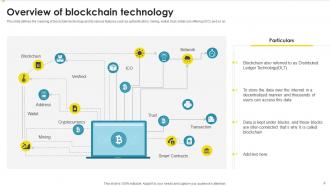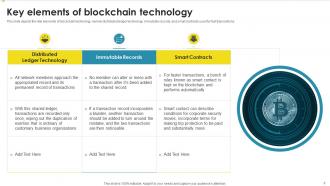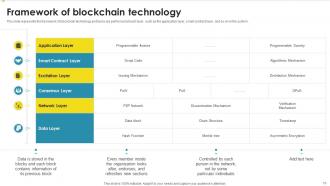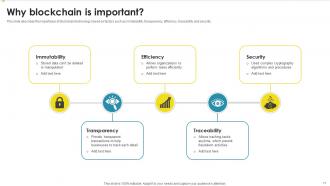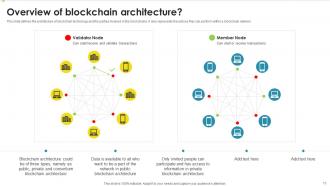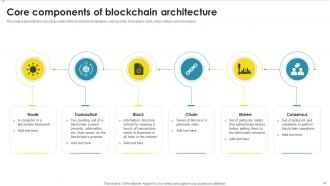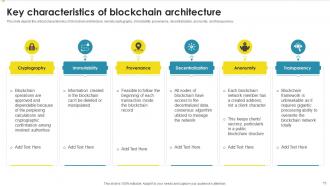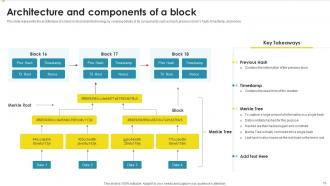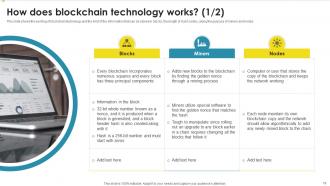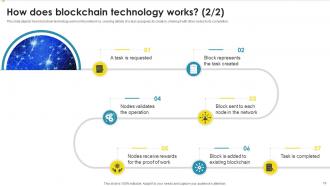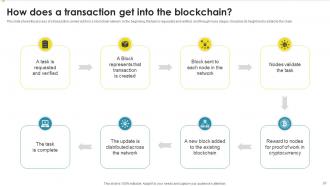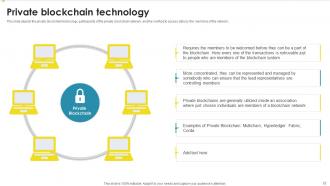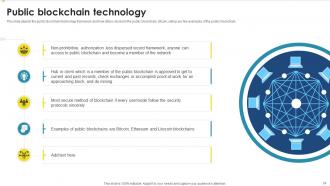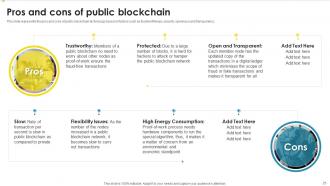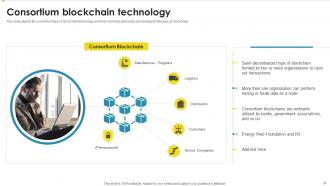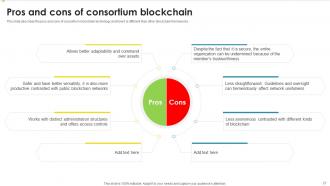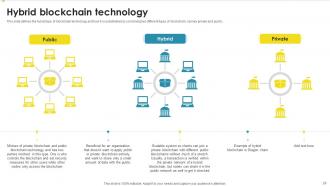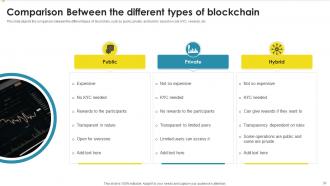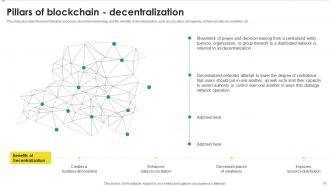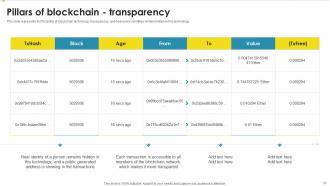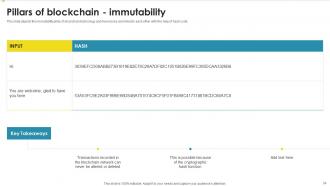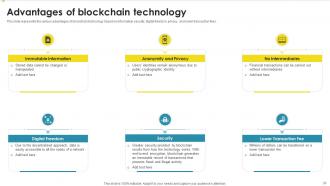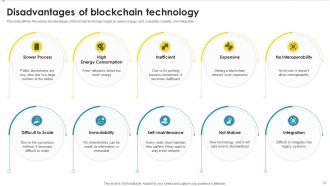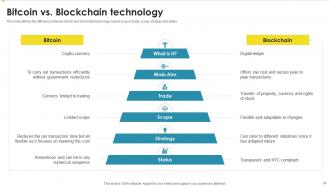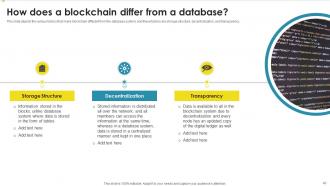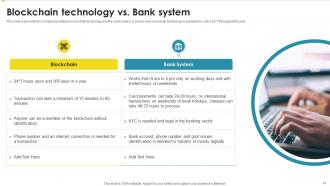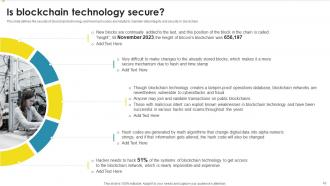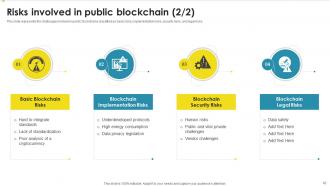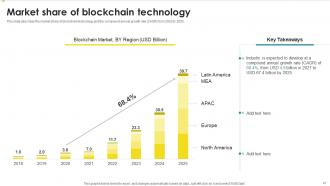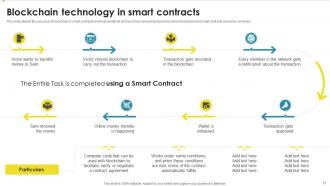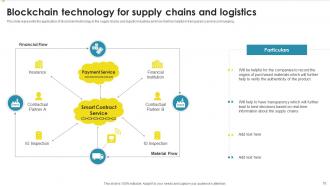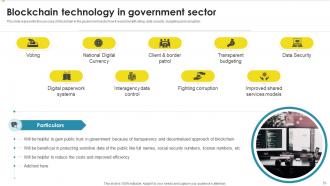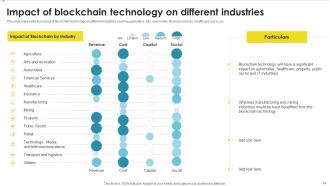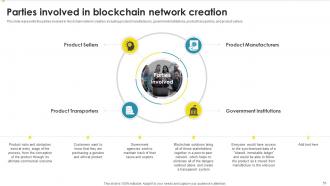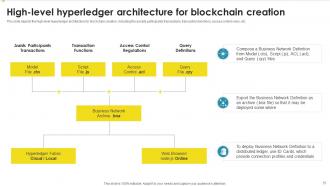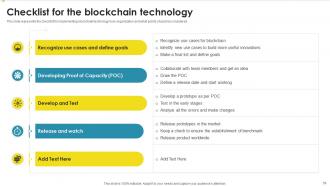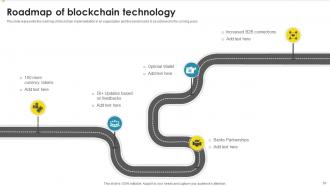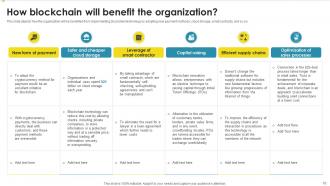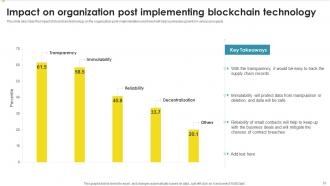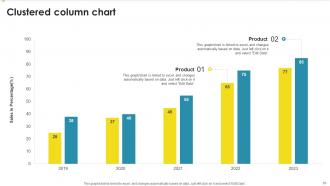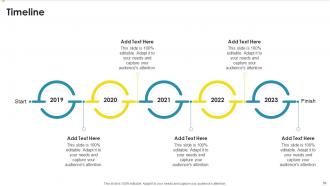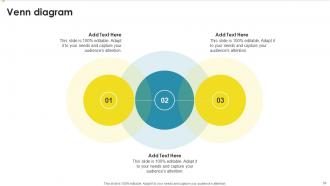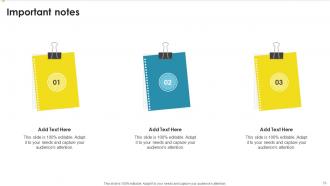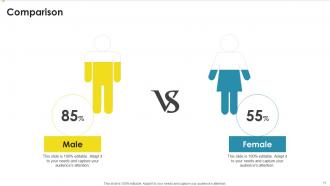Peer To Peer Ledger Powerpoint Presentation Slides
Want to elucidate the importance of blockchain technology with information about its various features in your company. Here is a competently designed template on Distributed Ledger Technology that lets you depict your organizations current situation by describing the problems that occurred in the past years. In addition, distributed ledger template showcases the core components of blockchain architecture and its characteristics. It also throws light on the components of each block in blockchain technology along with its architecture. Moreover, this digital ledger presentation represents how a transaction gets into blockchain and details different blockchain technologies such as private, public, consortium, hybrid, etc. Further, the cryptographic ledger template highlights details on the three pillars of blockchain technology, its pros and cons, bitcoin vs. blockchain technology, blockchain security, and the market of blockchain. Lastly, the blockchain deck showcases the application of blockchain in different sectors. These are the impact of blockchain technology, a checklist, a 30-60-90-day plan, and a roadmap for blockchain implementation. Our designers have created 100 percent customizable templates, keeping your convenience in mind. Press the download button to bag this fabulous deck today.
You must be logged in to download this presentation.
PowerPoint presentation slides
This complete presentation has PPT slides on wide range of topics highlighting the core areas of your business needs. It has professionally designed templates with relevant visuals and subject driven content. This presentation deck has total of seventy two slides. Get access to the customizable templates. Our designers have created editable templates for your convenience. You can edit the color, text and font size as per your need. You can add or delete the content if required. You are just a click to away to have this ready-made presentation. Click the download button now.
People who downloaded this PowerPoint presentation also viewed the following :
Content of this Powerpoint Presentation
Slide 1: This slide displays the title Peer-to-Peer Ledger.
Slide 2: This slide states Agenda of the presentation.
Slide 3: This slide shows Table of Content for the presentation.
Slide 4: This is another slide continuing table of content.
Slide 5: This slide exhibit table of content- Problems experienced by the organization
Slide 6: This slide depicts the problems experienced by the organization.
Slide 7: This slide exhibit table of content- Introduction of blockchain.
Slide 8: This slide defines the meaning of blockchain technology and its various features such as authentication, mining, wallet, trust, initial coin offering (ICO).
Slide 9: This slide depicts the vital elements of blockchain technology, namely distributed ledger technology, immutable records.
Slide 10: This slide represents the framework of blockchain technology and tasks are performed at each layer.
Slide 11: This slide describes the importance of blockchain technology based on factors such as immutability, transparency, efficiency, traceability and security.
Slide 12: This slide exhibit table of content- About blockchain architecture.
Slide 13: This slide defines the architecture of blockchain technology and the parties involved in the blockchains.
Slide 14: This slide represents the core components of the blockchain architecture, such as node, transaction, block, chain, miners, and consensus.
Slide 15: This slide depicts the critical characteristics of blockchain architecture.
Slide 16: This slide represents the architecture of a block in blockchain technology by covering details of its components.
Slide 17: This slide exhibit table of content- Working of blockchain technology.
Slide 18: This slide shows the working of blockchain technology.
Slide 19: This slide depicts how blockchain technology works in the network by covering details of a task assigned, its creation, sharing it with other nodes to its completion.
Slide 20: This slide shows the process of a transaction carried out from a blockchain network.
Slide 21: This slide exhibit table of content- Different types of blockchain technologies.
Slide 22: This slide depicts the private blockchain technology, participants of the private blockchain network, and the method to access data by the members of the network.
Slide 23: This slide represents the Pros and cons of the private blockchain framework based on factors such as speed, flexibility, trust-building, and security.
Slide 24: This slide depicts the public blockchain technology framework and how data is stored in the public blockchain, bitcoin, voting.
Slide 25: This slide represents the pros and cons of public blockchain technology based on factors such as trustworthiness, security, openness and transparency.
Slide 26: This slide depicts the consortium type of blockchain technology and how members and nodes are arranged in this type of blockchain.
Slide 27: This slide describes the pros and cons of consortium blockchain technology and how it is different than other blockchain frameworks.
Slide 28: This slide defines the hybrid type of blockchain technology and how it is established by combining two different types of blockchain, namely private and public.
Slide 29: This slide depicts the pros and cons of the hybrid blockchain technology based on factors such as architecture, scalability and transparency.
Slide 30: This slide depicts the comparison between the different types of blockchain, such as public, private, and hybrid, based on cost, KYC, rewards, etc.
Slide 31: This slide exhibit table of content- Three pillars of blockchain technology.
Slide 32: This slide describes the decentralization process in blockchain technology and the benefits of decentralization.
Slide 33: This slide represents the first pillar of blockchain technology, transparency, and how users' identities remain hidden in this technology.
Slide 34: This slide depicts the immutability pillar of blockchain technology and how blocks are linked to each other with the help of hash code.
Slide 35: This slide exhibit table of content- Pros and cons of blockchain technology.
Slide 36: This slide represents the various advantages of blockchain technology based on information security, digital freedom, privacy, and lower transaction fees.
Slide 37: This slide defines the various disadvantages of blockchain technology based on speed, energy, cost, scalability, maturity, and integration.
Slide 38: This slide exhibit table of content- Blockchain technology and other technologies.
Slide 39: This slide defines the difference between bitcoin and blockchain technology based on goal, trade, scope, strategy and status.
Slide 40: This slide depicts the various factors that make blockchain different from the database system.
Slide 41: This slide represents the comparison between blockchain technology and the bank system.
Slide 42: This slide exhibit table of content- Blockchain security.
Slide 43: This slide defines the security of blockchain technology and how hash codes are helpful to maintain data integrity and security in blockchain.
Slide 44: This slide defines the various risks involved in public blockchains, such as 51% attacks, double spending, and proof of work.
Slide 45: This slide represents the challenges involved in public blockchains classified as basic risks, implementation risks, security risks, and legal risks.
Slide 46: This slide exhibit table of content- Market size of blockchain technology.
Slide 47: This slide describes the market share of blockchain technology and the compound annual growth rate (CAGR) from 2020 to 2025.
Slide 48: This slide exhibit table of content- How blockchain works for different sectors
Slide 49: This slide depicts the use cases of blockchain technology in the banking and finance sector, including payment systems, share market, and trade finance.
Slide 50: This slide describes the use case of blockchain in the healthcare sector and how it would be beneficial for medical departments and patients.
Slide 51: This slide depicts the use case of blockchain in smart contracts and how beneficial and less time-consuming it would be.
Slide 52: This slide represents the application of blockchain technology in the supply chains and logistic industries.
Slide 53: This slide represents the use case of blockchain in the government sector how it would benefit voting, data security, budgeting and corruption.
Slide 54: This slide represents the impact of blockchain technology on different industries covering agriculture, arts, automotive, financial services, healthcare and so on.
Slide 55: This slide exhibit table of content- Implementation of blockchain technology in company
Slide 56: This slide represents the parties involved in blockchain network creation.
Slide 57: This slide depicts the high-level Hyperledger architecture for blockchain creation.
Slide 58: This slide represents the checklist for implementing blockchain technology in an organization and what points should be considered.
Slide 59: This slide depicts the 30-60-90 days plan for blockchain technology in an organization and what tasks should be performed in the first 30, 60, and 90 days.
Slide 60: This slide represents the roadmap of blockchain implementation in an organization and the benchmarks to be achieved in the coming years.
Slide 61: This slide exhibit table of content- Impact of blockchain technology
Slide 62: This slide depicts how the organization will be benefited from implementing blockchain technology.
Slide 63: This slide describes the impact of blockchain technology on the organization post-implementation and how it will help businesses grow from various prospects.
Slide 64: This slide contains all the icons used in this presentation.
Slide 65: This slide is titled as Additional Slides for moving forward.
Slide 66: This slide display Clustered column chart for different products.
Slide 67: This is a Financial slide. Show your finance related stuff here.
Slide 68: This is a Timeline slide. Show data related to time intervals here.
Slide 69: This slide depicts Venn diagram with text boxes.
Slide 70: This slide shows Post It Notes. Post your important notes here.
Slide 71: This is a Comparison slide to state comparison between commodities, entities etc.
Slide 72: This is thank you slide & contains contact details of company like office address, phone no., etc.
Peer To Peer Ledger Powerpoint Presentation Slides with all 77 slides:
Use our Peer To Peer Ledger Powerpoint Presentation Slides to effectively help you save your valuable time. They are readymade to fit into any presentation structure.
FAQs
Blockchain technology is a digital ledger that is used to record and store data securely in a decentralized and transparent manner. It uses cryptography to ensure the integrity and security of data, making it tamper-proof and immutable.
The different types of blockchain technologies include public, private, consortium, and hybrid blockchains. Public blockchains are open to everyone, while private blockchains are restricted to specific users. A group of organizations manages consortium blockchains, and hybrid blockchains combine features of public and private blockchains.
Blockchain technology works by creating a digital ledger of transactions that is maintained by a network of nodes. Each transaction is recorded as a block, which is then added to the chain of previous blocks, creating an unbroken chain of records. The records are secured by cryptography, and a consensus mechanism maintains the integrity of the chain.
The advantages of blockchain technology include increased security, transparency, efficiency, and traceability. It also provides a decentralized system that eliminates the need for intermediaries and reduces transaction costs.
The disadvantages of blockchain technology include the high energy consumption required for mining, scalability issues, lack of standardization, and limited regulatory framework. Additionally, the technology is still in its early stages and has not yet been widely adopted.
-
Their products can save your time, effort and money. What else you need. All in one package for presentation needs!
-
“The presentation template I got from you was a very useful one.My presentation went very well and the comments were positive.Thank you for the support. Kudos to the team!”

















































